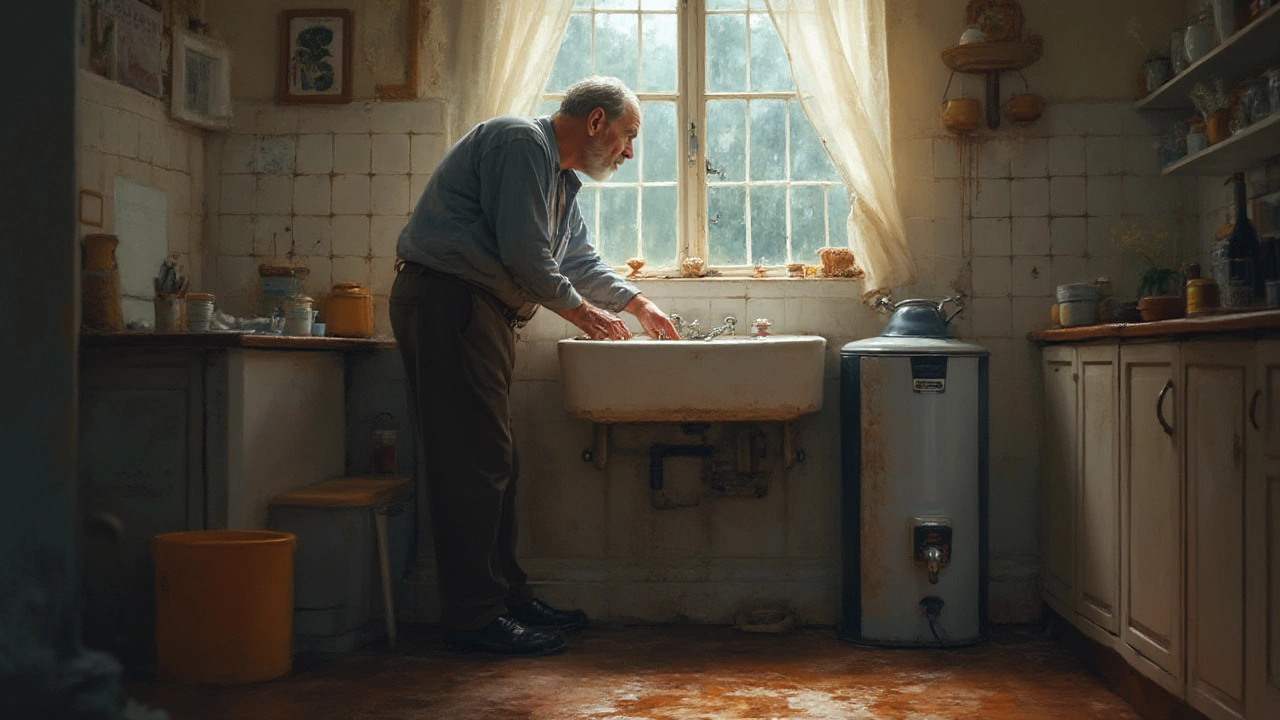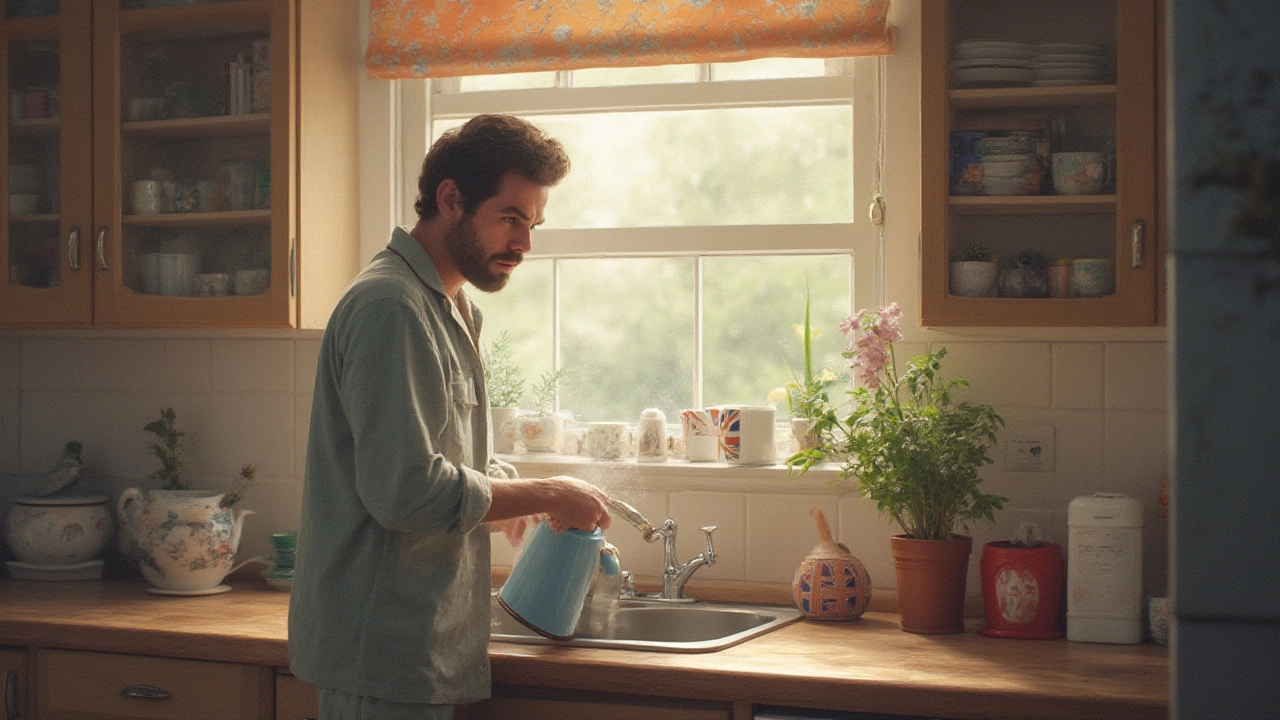
- 23 Mar 2025
- Gideon Thornton
- 0
Imagine you're in the middle of a relaxing shower when suddenly the water turns icy cold. Could it be that your water heater needs a reset? It's more common than you might think, and often easy to fix. But before you start pressing buttons, it's crucial to figure out if a reset is really what's needed.
So, what should you look for? Strange noises, inconsistent water temperature, and the hot water running out faster than usual are often the first signs. Let's be real, nobody enjoys a surprise cold shower, and sometimes, all your water heater needs is a little reset to get back on track.
But hold up—before you rush to the heater, it's worth understanding why it needed a reset in the first place. Things like power surges, thermostat issues, or even a tripped breaker might be behind it. Knowing the cause can help prevent it from happening again.
Feeling a bit uncertain about fiddling with the water heater? Safety first, I say. Follow some basic steps to reset your water heater safely, or know when to call in a pro. Trust me, taking the time to do it right could save you from a bigger headache down the line.
- Signs Your Water Heater Needs a Reset
- Common Causes for Needing a Reset
- Steps to Safely Reset Your Water Heater
- Preventive Tips to Avoid Future Issues
Signs Your Water Heater Needs a Reset
Recognizing when your water heater needs a good ol' reset can save you time and money. Nobody wants to endure unexpected cold showers or spike their energy bills because their heater isn't running efficiently. So, what should you keep an eye (or ear) out for?
Strange Sounds
Water heaters aren't the quietest appliances in your home, but if you start hearing banging, popping, or rumbling noises, it might be telling you something's off. Often, this could mean there's sediment buildup or an issue with the heating element itself.
Inconsistent Water Temperature
If the hot water is playing hard to get, switching from lukewarm to freezing without notice, there's a good chance your heater might need a reset. This inconsistency often suggests that the unit isn't cycling correctly, possibly needing a reset to get its act together.
No Hot Water At All
Okay, this one's pretty obvious. If you're not getting any hot water, the heater could have switched off, maybe due to a safety cutoff. Sometimes, a simple reset is all it takes to restore the warm flow and avoid panicking.
Frequent Power Surges
Heavy power usage or a recent surge might have tripped the thermostat switch. This could affect how your water heater operates. A reset may help in restoring normal function, but if the issue persists, it might need professional attention.
These signs can be your heater's way of asking for a reset. Understanding these cues and knowing what to do next can make all the difference in maintaining those comfy hot showers you love.
Common Causes for Needing a Reset
When your water heater starts acting up, understanding why it needs a reset can save you time and stress. Here are some common reasons that might lead you to hit that reset button.
Power Surges
A sudden spike in your home’s electrical supply can trip the water heater's reset button. Think of it like your heater's way of saying, "Whoa, that was too much!" These surges can happen during storms or occasionally if your appliances draw too much power at once. Keeping an eye on your home’s electrical usage can help avoid this.
Thermostat Glitches
Thermostats are the brain of your water heater. If it starts reading temperatures wrong or doesn’t turn off the heating element when it should, things can get overheated, prompting a reset. Regular checks can catch thermostat issues before they become a hassle.
Tripped Circuit Breaker
Sometimes the circuit breaker trips due to overload, causing the heater to need a reset. This isn’t just annoying; too many trips can wear out your system. It might be worth checking if the breaker connected to your heater is rated appropriately.
High Temperature Cutoff Switch
A built-in safety feature, this switch trips when the water gets too hot, stopping potentially dangerous conditions. If you're resetting your water heater often because of this, it might be worth investigating what's causing the heater to overheat.
Understanding these reasons helps prevent hasty resets and potentially prolongs the life of your unit. If you find yourself constantly resetting, it might be time to consult a professional to ensure your system is in top shape.

Steps to Safely Reset Your Water Heater
Alright, ready to get that water heater back in action? Let's talk through the steps to safely reset it. First things first, safety is key, so make sure you follow these guidelines to avoid any mishaps.
Switch Off the Power
You don't want to be dealing with live electricity, right? Start by locating the breaker panel in your home. Turn off the power supply to the water heater. You don't want any unexpected shocks!
Open the Access Panel
Next up, you need to find the access panel on the water heater. It's usually held in place with a couple of screws. Unscrew them carefully using a screwdriver, and you'll see the reset button on the thermostat.
Press the Reset Button
Time for action! Press the reset button with a bit of pressure. It's often red and pretty hard to miss. If it's popped out, just press it in until it clicks. This should do the trick!
Reassemble and Reconvene Power
Screw the access panel back in place, and make sure everything looks secure. Head back to the breaker and turn the power back on. Now, give it some time to heat the water and test if it worked by running the hot water tap.
Check for a Test Run
If everything's good, you should be bathing in warmth once again. But if problems persist, it might be time to call a professional. Sometimes, the issue can be more than just a simple reset.
Regular Maintenance Tips
After you've reset your water heater, consider setting up a regular maintenance schedule. Flushing the tank yearly and checking temperature settings can ward off issues before they start. Prevention is better than a chilly surprise!
| Statistic | Details |
|---|---|
| Optimal Temperature Setting | 120°F |
| Recommended Maintenance Check | Every 6-12 months |
Preventive Tips to Avoid Future Issues
Keeping your water heater in tip-top shape doesn’t have to be a chore. A few simple preventive steps can go a long way in dodging unexpected breakdowns and, yes, those cold showers. Here's how you can stay ahead of potential issues.
Regular Maintenance Checks
First things first, put regular maintenance on your calendar. Checking your water heater every few months also means you're less likely to encounter surprises. Keep an eye out for corrosion or leaks that might need fixing before they become serious problems.
Flushing the Tank
Another biggie is flushing the tank. Over time, sediment can build up inside, impacting efficiency. Draining and flushing your heater once a year can help maintain optimal function. If you're not sure how to do this, plenty of local services can help you out for a reasonable price.
Setting The Right Temperature
Setting the temperature right—usually around 120 degrees Fahrenheit—isn't just about comfort; it can also extend your heater's life. Higher settings can speed up corrosion and overheat components.
Inspecting the Anode Rod
Ever heard of the anode rod? It's a crucial part that helps prevent rust. Every couple of years, check the rod; if it's significantly corroded, replace it to keep everything else in good shape.
Insulate Your Pipes
If you’re looking at a long-term solution for efficiency, consider insulating your pipes. This helps reduce heat loss and keeps your water heater from working overtime.
By staying proactive, you're not just preventing resets; you're extending the lifespan of your appliance and saving yourself from future hassle. Just a few minutes of care can mean the difference between a reliable hot shower and a sudden shock of cold water.




